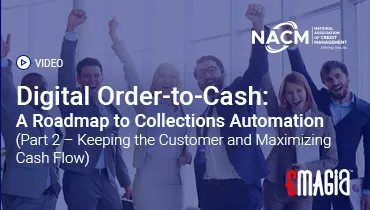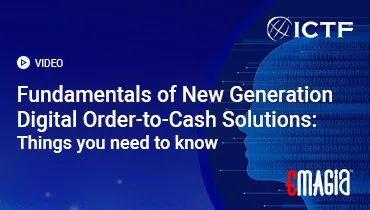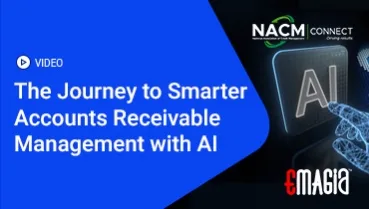The concept of automated correspondence stands at the heart of modern digital business communication. Whether you are deploying AI email automation, automated messaging workflows, automated replies, or automated customer support systems, understanding how to integrate automated correspondence effectively can transform your email workflows, reduce manual labour, enhance customer engagement, and streamline internal communications.
Introduction to Automated Correspondence and Business Communication Automation
what automated correspondence means in the business context, the role of automated messaging and AI communication tools, and how workflow automation and automated follow-ups fit into a broader AI-powered communications strategy.
Defining Automated Correspondence and Its Scope
Here we define “automated correspondence” in plain terms: the use of technology to generate, schedule, send and respond to communications (emails, messages, notifications, reminders) with minimal human intervention. We compare it to traditional correspondence and highlight key differences with automated outreach and email robots.
Why Automated Messaging and AI Email Automation Matter in Today’s World
We explore why organisations are adopting automated messaging and AI email automation: rising volume of communications, demand for instantaneous responses, cost pressures, need for consistency, scalability of automated notifications and automated reminders, and improved customer engagement automation.
How Automated Correspondence Fits into Workflow Automation and Communication Strategy
Automated correspondence within the broader discipline of workflow automation. It explains how email sequence automation, AI‐driven marketing automation, automated invoice and billing systems, and automation software for communication all intersect under the umbrella of automated correspondence solutions.
Core Technologies Behind Automated Correspondence and AI Communication Tools
Understanding the technology is essential. Here we discuss how machine learning, natural language processing, chatbots, integration platforms and communication engines drive automated correspondence and automated customer support.
Artificial Intelligence, Natural Language Processing and Automated Replies
We examine how AI correlates with correspondence automation: using NLP to interpret incoming messages, generating automated replies, personalising content, and enabling AI for business communication that feels human despite being automated.
Chatbot Communication and Automated Notifications/Reminders
Chatbot communication is a key facet of automated correspondence. This covers how chatbots, automated notifications and automated reminders work together to provide seamless outbound and inbound messaging, and support both marketing and customer support functions.
Integration and Workflow Automation in Business Operations
How automation software for communication links with CRM, ERP, messaging platforms and billing/invoice systems—enabling automated correspondence solutions that tie into business operations and automated outreach initiatives.
Benefits of Automated Correspondence: Why It’s Worth Implementing
Here we dive into the practical advantages of adopting automated correspondence, including efficiency gains, cost savings, improved customer experience, scalability, accuracy and better engagement through email template automation.
Efficiency, Scalability and Cost Savings with Automated Messaging
Automating routine messages, follow-ups and communications frees staff time, reduces human error and enables organisations to scale communications without linear increases in cost or headcount.
Improved Customer Engagement Through AI Email Automation and Automated Replies
We explore how automated correspondence can enhance user experience: faster responses, personalised content, consistent communication cadence via email sequence automation, and proactive outreach rather than reactive support.
Enhanced Compliance, Accuracy and Auditability in Automated Correspondence Solutions
How automation contributes to compliance and privacy in automated messaging, ensures consistent application of templates, tracks communication logs and supports audit trails—particularly relevant for regulated industries.
Use Cases of Automated Correspondence Across Departments and Industries
Here we highlight real-world applications of automated correspondence: marketing campaigns, billing/invoice notifications, customer service, internal HR communications, supplier communications, and multi-channel outreach.
Marketing and Sales: Automated Outreach and Email Sequence Automation
We explore how marketing teams use automated correspondence: drip campaigns, welcome series, upsell/renewal reminders and integration of AI-driven marketing automation tools for messaging at scale.
Customer Support and Service: Automated Customer Support and Automated Follow-Ups
We cover service-desk scenarios: automated replies, chatbots, ticket routing, status updates, proactive notifications and internal workflow triggers that ensure timely communication and reduce support backlogs.
Finance and Billing: Automated Invoice and Billing Systems with Correspondence Automation
Discuss how finance teams deploy automated correspondence for invoice generation, billing reminders, late-payment notifications, and integration with automated messaging to accelerate collections and improve cash flow.
Internal Communication and HR: Automated Messaging for Employee Engagement and Reminders
Internal use-cases: onboarding messages, policy reminders, event notifications, and workflow automation linking HR systems to automated correspondence to boost employee engagement and streamline communications.
Designing Effective Automated Correspondence Workflows
Successful implementation depends on designing workflows well. This section outlines how to map message triggers, segment audiences, build templates, set escalation paths, and measure performance of automated correspondence campaigns.
Mapping Communication Triggers, Segmentation and Timing
Here we discuss identification of trigger events (e.g., sign-up, purchase, overdue payment), audience segmentation, scheduling of automated follow-ups and aligning email workflows with business logic for maximal relevance and timing.
Building Templates, Personalisation and Dynamic Content in Automated Correspondence
We explore how to design email/messaging templates, apply dynamic fields, personalise content based on user data, and maintain brand voice while automating at scale through AI correspondence solutions and email template automation.
Escalation Logic, Monitoring and Performance Metrics for Email Workflows
We cover how to include escalation paths (e.g., non-response triggers a human follow-up), monitor engagement metrics, track open/response rates, evaluate automated outreach effectiveness and refine the workflow over time.
Implementation Challenges and Best Practices in Automated Correspondence
Automation is powerful—but not without pitfalls. This section addresses common challenges: over-automation fatigue, message relevance, integration hurdles, compliance/policy risks, and maintaining human touch while using communication automation tools.
Avoiding Over-Automation and Maintaining a Human Touch in AI Communication Tools
We explore risks of appearing robotic, how to maintain authenticity in automated correspondence, special-case messaging and hybrid-approach combining automated messaging and human response.
Integration Complexity and Ensuring Data Consistency in Workflow Automation
We examine technical and operational integration challenges when deploying automated correspondence tools: connecting CRM/ERP systems, ensuring data accuracy, managing system transitions, and learning curves for staff.
Compliance, Privacy and Ethical Considerations in Automated Correspondence Solutions
How automated messaging, AI communication tools and automated notifications must adhere to data privacy laws (GDPR, CCPA), opt-in requirements, transparency and ethical use of AI in business communication.
Measuring Success: Key Metrics and ROI of Automated Correspondence Campaigns
To justify investments in automation, you need to measure. This section covers metrics like response rate, time to first reply, customer satisfaction, cost per message, ROI, and how to tie automated correspondence to business outcomes.
Key Performance Indicators (KPIs) for Automated Messaging and AI Email Automation
Discuss metrics such as open rate, reply rate, click-through rate, conversion rate, time saved per message, cost savings, and overall engagement attributable to automated correspondence solutions.
Calculating ROI and Business Value of Automated Correspondence Solutions
We explain how to quantify cost savings, staff productivity gains, improved customer retention, scalability, speed improvements and how automation software for communication translates into tangible financial benefits.
Continuous Improvement: Refining Workflow Automation and Email Sequence Automation Over Time
Automation is not “set and forget”. This section covers continuous refinement: analysing metrics, refining templates, testing message timing, segmenting further, and integrating user feedback into AI correspondence solutions.
Future Trends in Automated Correspondence and AI Communication Tools
What’s next? We look ahead to how automated correspondence will evolve: conversational AI, voice-driven messaging, hyper-personalisation, integration of IoT/notifications, autonomous outreach workflows and next generation AI for business communication.
Conversational AI and Real-Time Chatbot Communication in Automated Correspondence
Explores how chatbots will evolve into more natural, real-time conversational agents, handling inbound and outbound messages seamlessly as part of automated correspondence ecosystems.
Hyper-Personalisation, Predictive Messaging and AI-Driven Outreach
Discusses how advanced machine learning will enable predictive messaging, automated follow-ups triggered by behaviour patterns, and personalised content at scale within automated messaging systems.
Voice, Video and Multichannel Messaging in Automated Correspondence
Looks at how the domain of automated correspondence will expand into voice assistants, video messaging, notifications via chat apps, and cross-channel coordination of auto-messages across email, chat, SMS and social platforms.
Best Practices Checklist for Deploying Automated Correspondence
Here is a practical checklist of best practices to guide organisations through planning, implementing and refining their automated correspondence strategy—from email workflows and automated messaging to measurement and governance.
- Start by mapping out current manual correspondence flows and identify automation opportunities.
- Select automation tools that integrate with your CRM, billing/invoice systems and messaging platforms.
- Segment your audience and personalise messages rather than sending one-size-fits-all.
- Design templates and workflows for automated replies, follow-ups, reminders and notifications.
- Ensure you maintain compliance and privacy standards when employing automated correspondence solutions.
- Set clear KPIs and monitor metrics like response time, engagement, cost savings and productivity gains.
- Test and iterate: refine message timing, content, triggers, templates and routing rules.
- Balance automation with human interaction to avoid impersonal communication.
- Train staff and build governance around workflow automation and AI for business communication best practices.
- Stay up to date with emerging trends in AI communication tools and voice-enabled automated correspondence.
How Emagia Elevates Automated Correspondence for Your Business
Emagia provides a unified platform that streamlines the implementation of automated correspondence across your organisation. With pre-built workflow automation modules, AI-driven messaging engines, email sequence automation templates and analytics dashboards, Emagia helps you deploy automated communication, follow-ups, reminders and notifications cost-effectively and at scale. Its integration with billing, CRM and customer support systems means you can manage outreach, billing correspondence, customer engagement automation and messaging compliance from a single pane of glass. Emagia empowers your team to move from manual email workflows to intelligent, scalable, automated correspondence that aligns with business goals and organisational growth.
Frequently Asked Questions (FAQs)
What is automated correspondence exactly?
Automated correspondence refers to the use of technology—such as AI, workflow automation, email sequence automation and automated messaging—to generate, schedule and send messages without repetitive manual effort. It covers everything from notifications and reminders to full customer outreach campaigns.
How does AI email automation differ from traditional email workflows?
AI email automation uses machine learning and natural language processing to personalise messages, trigger intelligent follow-ups, prioritise routing and optimise timing—whereas traditional workflows require manual scheduling, manual segmentation and little dynamic adaptation.
Can automated correspondence replace human communication entirely?
Not entirely. While many routine communications can and should be automated, maintaining a human touch remains important for complex queries, sensitive messaging and relationship-building. The best approach combines automated correspondence with strategic human responses.
What kinds of businesses benefit most from automated messaging tools?
Any business with high volumes of outgoing or incoming communications—such as e-commerce, SaaS, financial services, customer support centres, HR teams or billing departments—can benefit significantly from automated correspondence, email workflows and AI communication tools.
Is compliance and privacy at risk when using automated correspondence systems?
It can be if not handled correctly. Automation of messaging must follow data privacy laws, include opt-in/opt-out mechanisms, maintain audit trails, ensure message content meets regulatory standards and integrate secure systems. Proper governance and tool selection address these risks.



